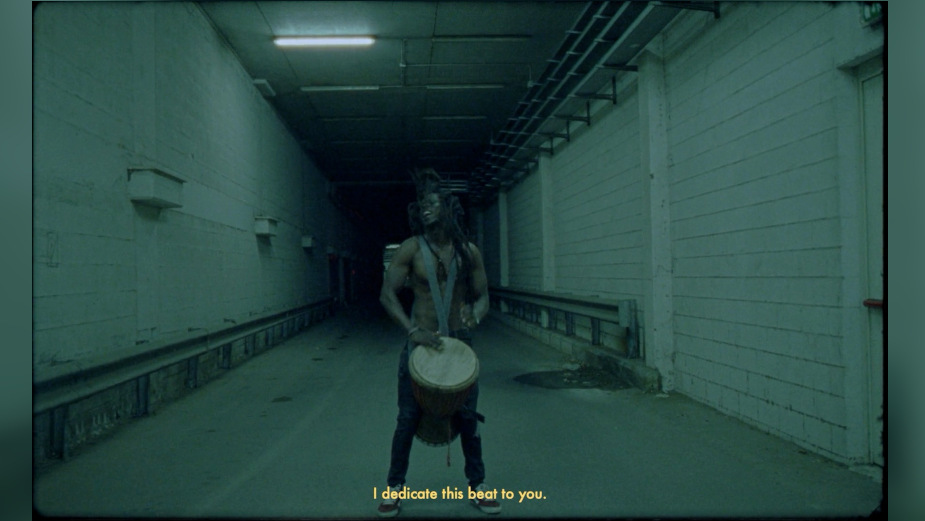
LBB Film Club: ISMA

Ismaila Mbaye is Europe’s leading African percussionist. Originally from Senegal, he is an accomplished percussion master, whose story has been captured by the C41 directors in an intimate and psychologically charged ‘visual poem’.
Curiously, instead of leaning into Ismaila’s percussive comfort zone, the filmmakers have chosen soft-yet-strained string instruments and woodwind, only breaking out into dramatic, passionate percussion at the climax. The emotive film was shot in Castel Volturno, a part of Italy where exploited and vulnerable migrants, largely from West Africa, live under the shadow of organised crime society the Camorra. The location provides the perfect backdrop for a journey into Isma’s psyche, exploring the artistic tension between creation and destruction - ultimately moving to a place of redemption and positivity.
The directors, Stefano and Giovanni talk about bringing Ismaila’s philosophies and struggles of life in their unexpected short film.
LBB> What was the initial idea for this piece?
Stefano & Giovanni> We wanted to represent the inner conflict of an artist who feels lost at a certain point in his life: an inner block prevents him from moving forward. An existential torment that becomes more and more unbearable. He feels that his life without art would be meaningless, which is why he has to make a journey through his conscience. Not a physical journey but an inner journey; an individual path that would allow this catharsis. We started from this thesis to develop and trace the entire narrative line of the film.
LBB> How much involvement did Ismaila have in the production of this piece? Was there anything he added or did not want to include?
Stefano & Giovanni> We met Isma several years ago when we had the opportunity to discuss various topics together and explore more intimate and personal issues. However, we tried to leave him out of the creative process as much as possible, we never went into detail, i.e. we only involved him initially by pitching the idea and recording some conversations between us. He fully accepted our approach because he accepted that the work had been written with him in mind. He gave us a certain degree of expressive freedom, which was crucial for us and without which we would not have decided to "embark" on this work.
LBB> The film covers many emotions, particularly poignant is the sense of destruction which turns into music and ultimately a sense of freedom. Why was it important to showcase music as a form of liberation?
Stefano & Giovanni> Nietzsche said that chaos is needed to generate a dancing star. We firmly believe that every artistic expression is permeated by this eternal conflict "between a destructive and a creative drive" as if two forces of opposite polarities always coexisted. This seemed particularly true in Isma's story and we decided to make a piece that intimately respects this vision.
We wanted to tell the story through the point of view of someone who has suffered and fought to risk their life. The film is a metaphor for a journey through the protagonist's consciousness, which is intended to evoke not only a spiritual journey but also a physical one as brutally earthly as the one in the Mediterranean, a journey that could end in tragedy.
LBB> The topic of human rights is significant. Which details touch on this and why was it important to include?
Stefano & Giovanni> Isma's music is possible only and exclusively because behind it there is a past of suffering and pain, not only his own but also that of hundreds of migrants who every day try to reach the shores of Europe in search of hope and a better life.
Isma's music is permeated by this sense of pain, this conflict that he constantly carries within himself, precisely because it is meant to be both a commemoration of his brothers who did not make it and because it releases at the same time a great sense of freedom and redemption. The theme of human rights was an integral part of the story because we didn't just want to portray an artist, but we wanted to celebrate the life of a man who experienced this story first hand.
LBB> It was important to showcase Ismaila’s percussion during the film. How did you decide on the placement of it within the piece?
Stefano & Giovanni> We chose to use percussion only at the end and this was no accident. We wanted them to be the climax of the story, we didn't want to anticipate them, so we worked with strings and woodwinds for most of the film, building up emotionally and only letting the tribal music "explode" at the end.
LBB> What was the process of shooting this film? How long did it take and were there any changes you made while shooting?
Stefano & Giovanni> From the initial idea to the final version, exactly one year has passed. We started with the written text, the voice-over and then tried to represent things through a more conceptual and visual form, letting the words of the text guide the viewer. We tried to plan the shoot as much as possible, but being mindful to allow spontaneity.
Initially, we started with several meetings with Isma, gradually we realized that there were more interesting themes to explore. We also recorded a few meetings with Isma in which we interviewed him and recorded only the audio so that we could reel it all off later. The shooting phase was the easiest actually because it only lasted a couple of days. While editing and sound took longer than expected.
LBB> How did the voiceover change and adapt through the recording and editorial process?
Stefano & Giovanni> With the voice on our timeline things changed a little, we just had to adjust the overall pace of the film and balance it without upsetting too much of what we had done up to that point. So we tried several things before we found a way that worked. When you're working with the voice you know from the outset that you want to evoke through words, a wrong timbre or tone can make a word or concept sound different than what you imagined. When we recorded the voice, if we didn't like a word when we heard it on the headphones, we had it re-recorded with different intonations, to bring it closer to our initial idea. Respecting the pauses was important to ensure it wasn't strung together in a way that made the editing process more difficult than it needed to be.
LBB> The sound selection could be considered surprising, as it does not entirely feature percussion. What was the sound selection process like?
Stefano & Giovanni> If we had only used percussion, we knew we would have made a flat film, so we immediately thought of the possibility of using strings and winds to add a lyrical touch to the story, we wanted something lyrical and tribal at the same time, to create this link between two apparently irreconcilable universes and to see if they could coexist.
LBB> Were there any memorable moments on set?
Stefano & Giovanni> The moment when the follow focus stopped working in the middle of the shoot... We knew we were doomed because we were in the middle of no man's land, but our cameraman solved the problem by dismantling the control unit and putting a piece of tinfoil inside to act as a conductor. That's art too!











